By Daniel J. Heisey/photos by Douglas Sellers
Necessity is indeed the mother of invention, especially when a model railroader wants to work out details mainly from scratch. One area where improvisation has paid off is with weathering common brick on HO scale model buildings. This method will work on other scales as well. All that is needed are a mortar and pestle and some basic art supplies. Although there are commercially available products, such as a two ounce container of Used Brick from Bragdon Enterprises, with experimental weathering comes the satisfaction of homemade creativity.
For models manufactured with brick walls that have been cast in brown or red plastic, such as some of the Walthers Cornerstone kits, weathering can be a simple matter of rubbing the plastic with a piece of newspaper. Another way to achieve a weathered look is by grinding up with a mortar and pestle some artist’s charcoal sticks and then brushing on the resulting powder.Both the newsprint and the ground charcoal take the gloss off the plastic, and they give the impression of years of soot, whether from domestic or industrial chimneys, or from the daily passage of coal-fired steam locomotives. Needless to say, it is best to use a page from a newspaper without any color photographs or advertisements. Best results for applying the powder are with a dry oval badger brush such as used in pastel painting, or a rounded brush used in dusting cakes.
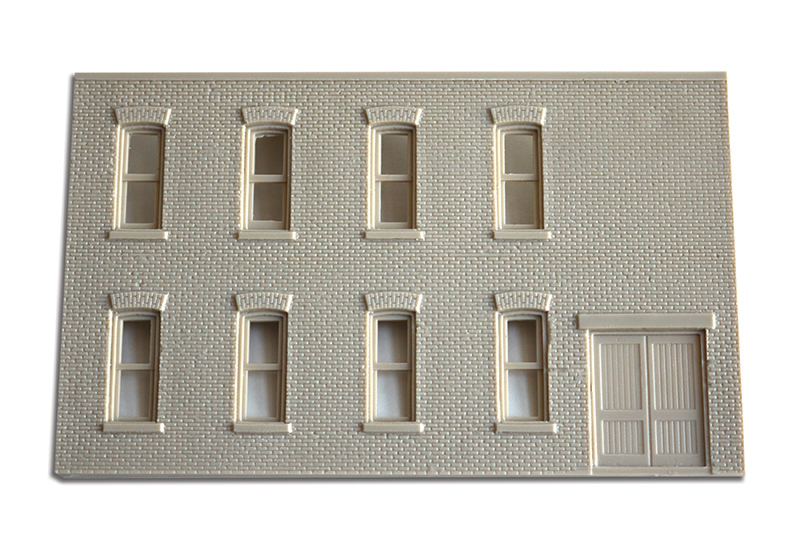
Plain beige plastic walls, pristine and crying out for weathering.
A more interesting challenge, and the main focus of this article, is when a kit comes with walls cast in beige or white plastic, such as produced by Woodland Scenics’ Design Preservation Models. While the façade of the model building calls for the look of polished brick and neatly painted wood trim, the common bricks of the sides and back need special attention. Here a modeler can draw upon boyhood memories of taking shortcuts down dingy alleys to get to the rail yard and its various late nineteenth-century and early twentieth-century brick buildings.
The facing brick can be done with a solid coat of Liquitex Burnt Sienna or maybe Liquitex Raw Umber, perhaps even Liquitex Raw Sienna or Unbleached Titanium for the occasional building faced with yellow or cream colored brick, but the common brick ought to be distinct. After all, in an actual building, such as the prototype for a model, as much planning and sweat went into the sides and back of the structure as went into the more photogenic façade. Our models deserve the same care.
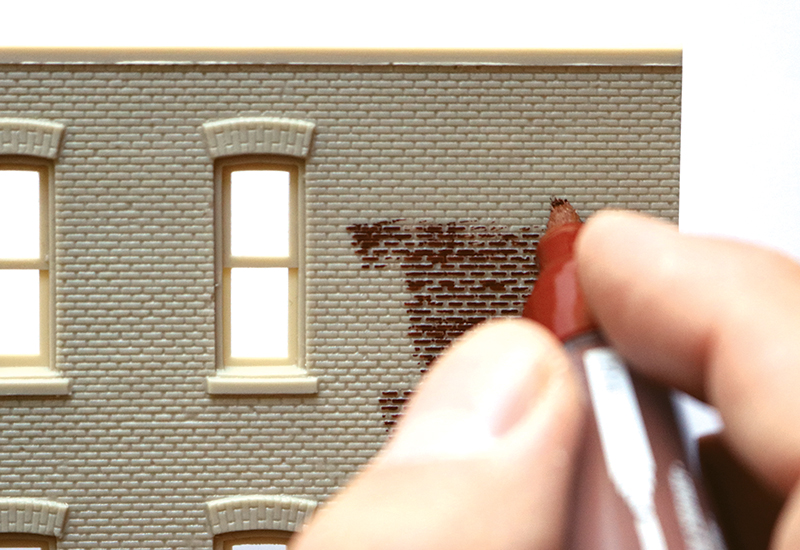
Applying Burnt Sienna as a base for weathered brick.
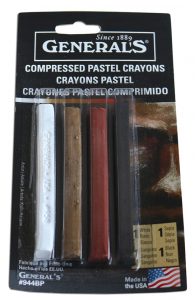 The first step requires applying a light coat of Burnt Sienna with a fine nib Liquitex paint marker. The goal is to highlight the bricks, not fill in the spaces in between. If some paint gets in between the bricks, use the tip of an X-Acto knife or a penknife to tidy things up. Window sills and thresholds of doors can be tinted with Prismacolor Cool Grey 90, applied and quickly wiped with a cotton swab. Doing so gives the impression of faded limestone or concrete.
The first step requires applying a light coat of Burnt Sienna with a fine nib Liquitex paint marker. The goal is to highlight the bricks, not fill in the spaces in between. If some paint gets in between the bricks, use the tip of an X-Acto knife or a penknife to tidy things up. Window sills and thresholds of doors can be tinted with Prismacolor Cool Grey 90, applied and quickly wiped with a cotton swab. Doing so gives the impression of faded limestone or concrete.
Step two is to brush on a mixture made from a half stick of white chalk, two sticks of sanguine compressed chalk, and one stick of charcoal. General Pencil is a good source for these items. Grind those four sticks into powder using a mortar and pestle. The grimy result looks unpromising, but when brushed on to the coating of Burnt Sienna, again using a rounded or badger brush, the effect is convincing.
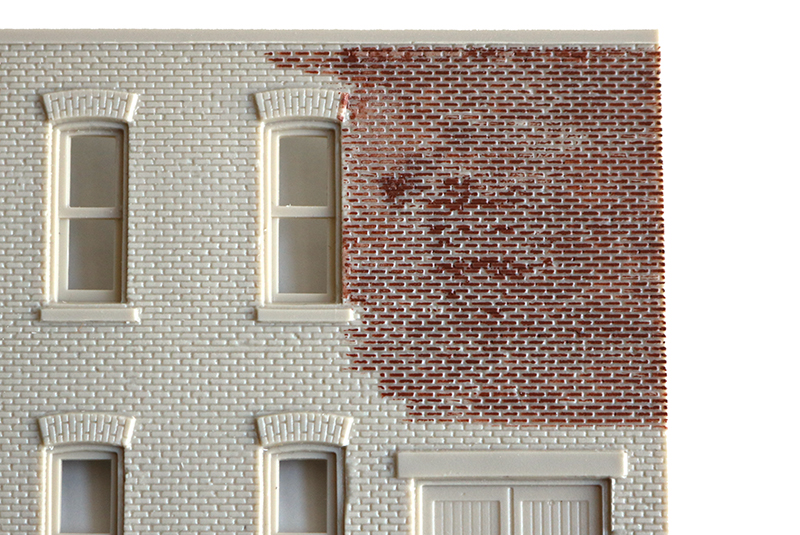
This process can be messy, the powder as it is brushed on scattering over a surprisingly wide area. Be sure to put down sheets of white copy paper or butcher paper so as to collect the scattered powder. When finished brushing on the powder, gather up the excess from the white paper and empty it back into the mortar. As Granma used to say, “Use it up, wear it out, make it do, or do without.”
Although newspaper ink and powdered charcoal can come off with handling, so far this technique of compounding chalk and charcoal and brushing it onto a painted surface has proven steadfast. Thus, there is no need for spraying on a bonding agent to keep the weathering intact.
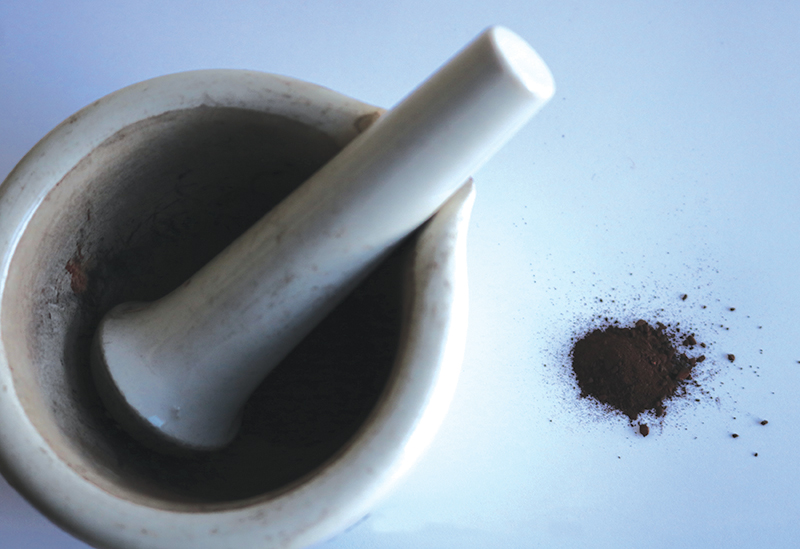
Using a mortar and pestle to grind up the chalks into a grimy powder.
With the pale plastic, this application also gives the “wooden” window frames and maintenance doors a realistic look of long-neglected but painted wood aged to a dim shade of khaki. Touch-up work on individual bricks can be done with the fine tip of a Prismacolor Sepia marker. This strangely soothing bit of what to others might seem to be tedium helps avoid giving the common brick a uniform appearance.
Of course, as model railroaders, our attention to detail can be a mixed blessing. As we immerse ourselves for hours seeking to get it just right, we can become frustrated. Sometimes we get so close to our task that we almost need a jeweler’s loupe. We need to remember that if anyone else sees our creations, it will be for about five minutes and from around three feet away.
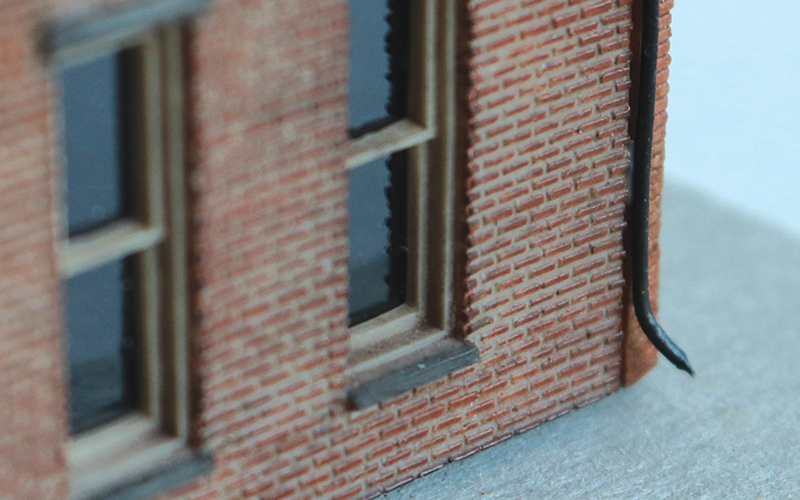
A finished common brick wall, weathered and full of small-town character
It can be a discouraging thought, as with so much else in life, all our tinkering going barely noticed, if at all. However, when there seems to be that sense of our efforts being taken for granted, it simply adds to the realism of our layout. After all, part of life in the small towns and cities we are modelling is people going about their daily lives, walking right by old brick buildings that took from men generations ago a lot of time and thought and work.
Daniel J. Heisey, O.S.B., is a Benedictine monk of Saint Vincent Archabbey, Latrobe, Pa., where he is known as Brother Bruno. He teaches Church History at Saint Vincent Seminary.
Douglas Sellers, O.S.B., is also a monk of Saint Vincent Archabbey. He works in the abbey’s public relations department and is known monastically as Brother Placid.
Subscribe to
Railroad Model Craftsman!



